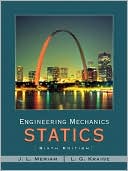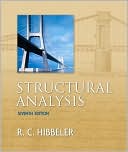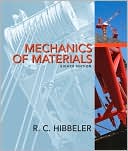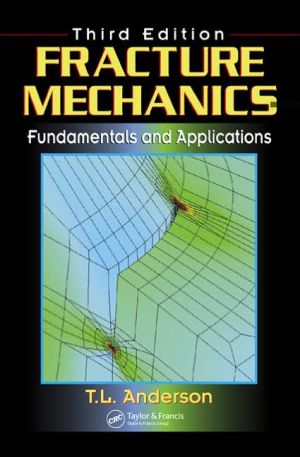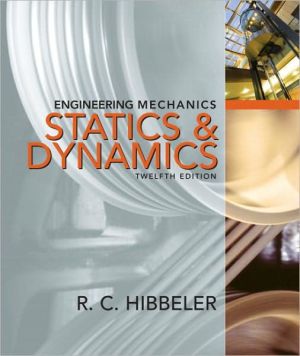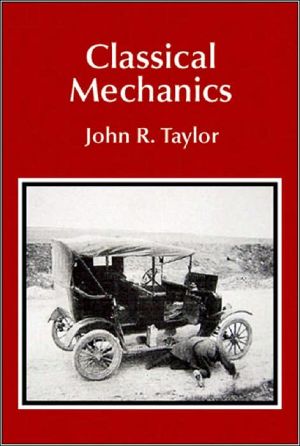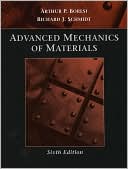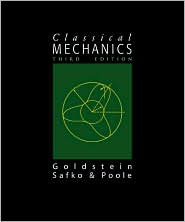Engineering Mechanics - Statics
Search in google:
Known for its accuracy, clarity, and applications, Meriam & Kraige’s Engineering Mechanics: Statics has provided a solid foundation of mechanics principles for more than 50 years. Now in its new Sixth Edition, the book continues to help readers develop their problem-solving skills with an extensive variety of highly interesting problems related to engineering design. In the new edition, more than 50% of the homework problems are new. There are also many new sample problems. To help readers build necessary visualization and problem-solving skills, the book strongly emphasizes drawing free-body diagrams—the most important skill needed to solve mechanics problems.
Chapter 1Introduction to Statics31/1Mechanics31/2Basic Concepts41/3Scalars and Vectors4Conventions for Equations and Diagrams5Working with Vectors51/4Newton's Laws71/5Units8SI Units9U.S. Customary Units9Primary Standards10Unit Conversions111/6Law of Gravitation12Gravitational Attraction of the Earth121/7Accuracy, Limits, and Approximations13Differentials13Small-Angle Approximations141/8Problem Solving in Statics14Making Appropriate Assumptions15Using Graphics15Formulating Problems and Obtaining Solutions16The Free-Body Diagram16Numerical Values versus Symbols17Solution Methods171/9Chapter Review18Chapter 2Force Systems232/1Introduction232/2Force23External and Internal Effects24Principle of Transmissibility24Force Classification24Action and Reaction25Concurrent Forces25Vector Components26A Special Case of Vector Addition26Section ATwo-Dimensional Force Systems262/3Rectangular Components26Conventions for Describing Vector Components27Determining the Components of a Force272/4Moment38Moment about a Point38The Cross Product39Varignon's Theorem392/5Couple50Vector Algebra Method50Equivalent Couples50Force-Couple Systems512/6Resultants58Algebraic Method58Principle of Moments59Section BThree-Dimensional Force Systems662/7Rectangular Components66Dot Product67Angle between Two Vectors682/8Moment and Couple74Moments in Three Dimensions74Evaluating the Cross Product74Moment about an Arbitrary Axis75Varignon's Theorem in Three Dimensions75Couples in Three Dimensions762/9Resultants882/10Chapter Review99Chapter 3Equilibrium1093/1Introduction109Section AEquilibrium in two Dimensions1103/2System Isolation and the Free-Body Diagram110Modeling the Action of Forces111Construction of Free-BodyDiagrams114Examples of Free-Body Diagrams1153/3Equilibrium Conditions121Categories of Equilibrium121Two- and Three-Force Members122Alternative Equilibrium Equations123Constraints and Statical Determinancy124Adequacy of Constraints125Approach to Solving Problems126Section BEquilibrium in Three Dimensions1453/4Equilibrium Conditions145Free-Body Diagrams146Categories of Equilibrium146Constraints and Statical Determinancy1483/5Chapter Review163Chapter 4Structures1734/1Introduction1734/2Plane Trusses175Simple Trusses175Truss Connections and Supports1764/3Method of Joints176Internal and External Redundancy178Special Conditions1784/4Method of Sections188Illustration of the Method188Additional Considerations1894/5Space Trusses197Statically Determinate Space Trusses197Method of Joints for Space Trusses198Method of Sections for Space Trusses1984/6Frames and Machines204Interconnected Rigid Bodies with Multiforce Members204Force Representation and Free-Body Diagrams2054/7Chapter Review225Chapter 5Distributed Forces2355/1Introduction235Section ACenters of Mass and Centroids2375/2Center of Mass237Determining the Center of Gravity237Center of Mass versus Center of Gravity2395/3Centroids of Lines, Areas, and Volumes240Choice of Element for Integration2415/4Composite Bodies and Figures; Approximations256An Approximation Method256Irregular Volumes2575/5Theorems of Pappus266Section BSpecial Topics2745/6Beams-External Effects274Types of Beams274Distributed Loads2755/7Beams-Internal Effects281Shear, Bending, and Torsion281Shear-Force and Bending-Moment Diagrams282General Loading, Shear, and Moment Relationships2825/8Flexible Cables293General Relationships293Parabolic Cable295Catenary Cable2975/9Fluid Statics308Fluid Pressure308Hydrostatic Pressure on Submerged Rectangular Surfaces309Hydrostatic Pressure on Cylindrical Surfaces311Hydrostatic Pressure on Flat Surfaces of Any Shape312Buoyancy3135/10Chapter Review328Chapter 6Friction3396/1Introduction339Section AFrictional Phenomena3406/2Types of Friction3406/3Dry Friction341Mechanism of Dry Friction341Static Friction342Kinetic Friction342Friction Angles343Factors Affecting Friction344Types of Friction Problems345Section BApplications of Friction in Machines3626/4Wedges3626/5Screws363Force Analysis364Conditions for Unwinding3656/6Journal Bearings3726/7Thrust Bearings; Disk Friction3736/8Flexible Belts3816/9Rolling Resistance3826/10Chapter Review390Chapter 7Virtual Work4017/1Introduction4017/2Work401Work of a Force402Work of a Couple403Dimensions of Work404Virtual Work4047/3Equilibrium405Equilibrium of a Particle405Equilibrium of a Rigid Body405Equilibrium of Ideal Systems of Rigid Bodies406Principle of Virtual Work407Degrees of Freedom408Systems with Friction408Mechanical Efficiency4097/4Potential Energy and Stability421Elastic Potential Energy421Gravitational Potential Energy422Energy Equation423Active-Force Diagrams423Principle of Virtual Work424Stability of Equilibrium4257/5Chapter Review437AppendicesAppendix AArea Moments of Inertia445A/1Introduction445A/2Definitions446Rectangular and Polar Moments of Inertia446Radius of Gyration447Transfer of Axes448A/3Composite Areas460A/4Products of Inertia and Rotation of Axes467Definition467Transfer of Axes467Rotation of Axes468Mohr's Circle of Inertia469Appendix BMass Moments of Inertia481Appendix CSelected Topics of Mathematics483C/1Introduction483C/2Plane Geometry483C/3Solid Geometry484C/4Algebra484C/5Analytic Geometry485C/6Trigonometry485C/7Vector Operations486C/8Series489C/9Derivatives489C/10Integrals490C/11Newton's Method for Solving Intractable Equations493C/12Selected Techniques for Numerical Integration495Appendix DUseful Tables499Table D/1Physical Properties499Table D/2Solar System Constants500Table D/3Properties of Plane Figures501Table D/4Properties of Homogeneous Solids503Index507
